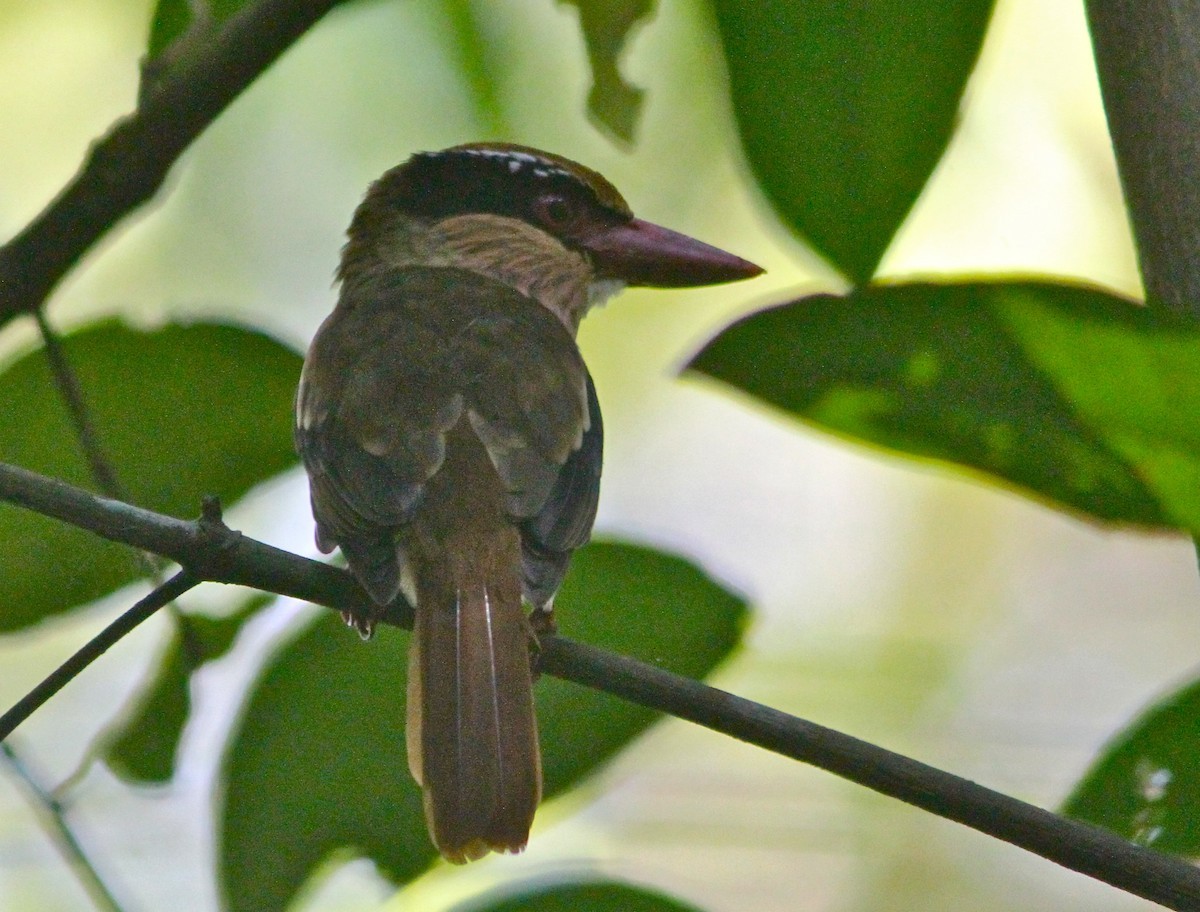Sulawesi Lilac Kingfisher
A species of Lilac-cheeked Kingfishers, Also known as Lilac Kingfisher Scientific name : Cittura cyanotis Genus : Lilac-cheeked Kingfishers
Sulawesi Lilac Kingfisher, A species of Lilac-cheeked Kingfishers
Also known as:
Lilac Kingfisher
Botanical name: Cittura cyanotis
Genus: Lilac-cheeked Kingfishers
Content
Description General Info
 Photo By Don Roberson
Photo By Don Roberson Description
The lilac kingfisher is 28 cm (11 in) long. It has the typical kingfisher shape, with a short tail and long bill. The adult male of the nominate race, C. c. cyanotis, has a brown crown and back and rufous rump and tail. It has a blue eye mask, separated from the crown by a white line, and a pale lilac ruff of long stiffened ear covert feathers. The underparts are white and the wings are blue, separated by a white line from the brown back. The red bill is large and flattened. In flight, the underwings are white with a black "wrist" patch. The female has a black, rather than blue, mask and upperwing coverts, and her supercilium is black, spotted with white. The juvenile resembles the adult, but is duller and browner with a grey-brown bill. The race C. c. sanghirensis is substantially larger and longer-billed than the nominate race. It has brighter, more rufous upperparts, a black forehead and mask, stiff, bright lilac ear coverts and upper breast, and a white chin. The call of this large tree kingfisher is a rapid ku-ku-ku-ku. The lilac kingfisher is unlikely to be confused with any other kingfishers in its range. 
Size
28 cm
Nest Placement
Cavity
Habitat
Sulawesi Lilac Kingfisher inhabits lush lowland rainforests and drier hill forests of Southeast Asia, including primary and tall secondary growths. This adaptable species is also found in altered landscapes such as fragmented forests, selectively logged areas, and mixed plantations. It thrives near coastal regions and inland, often perching on bare branches in open spaces or small trees for foraging.
Dite type
Insectivorous
General Info
Feeding Habits
Bird food type
Behavior
The lilac kingfisher is found in lowland rainforest and drier hill forest up to 1,000 m (3,300 ft) altitude. It perches motionless on a low branch watching for its prey, mainly large insects, on the ground below. Little else is known of the behaviour of this species, and no nests have been found. 
Species Status
This species has a restricted range and fragmented distribution, and is uncommon, with no records from south Sulawesi. Lowland deforestation has been extensive in recent decades, and the loss of its habitat has led to lilac kingfisher being classed as near-threatened. 

 Photo By Don Roberson
Photo By Don Roberson